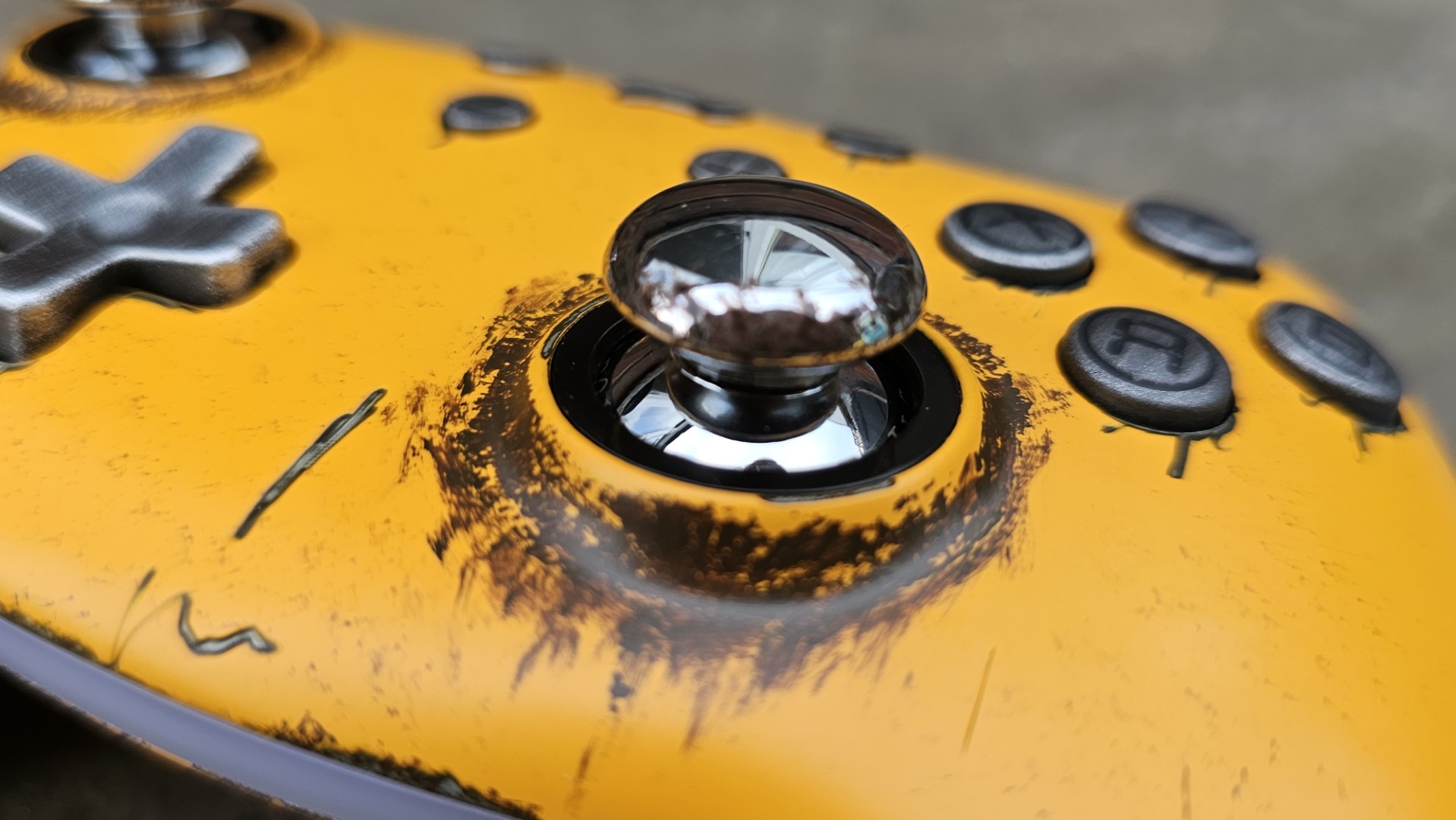
The PB Tails Metal Crush Defender TMR is certainly a quirky-looking controller with its bold design but it feels every inch its worth at it's premium price point. The addition of TMR technology makes stick movements buttery smooth and while it does lack some other features I'd expect at this price range it's a stylish choice for controller collectors and an absolute pleasure to use.
PB Tails is a relatively niche company specializing in quirky and unique gaming controllers, using unusual materials and finishes like aluminum alloy, having controllers inspired by cars and other strange shapes like their pixelated CHOC controller, I've always been intrigued by their designs but surious as to their actual functionality in day to day use. Among their lineup, the PB Tails Crush range features TMR sticks (tunneling magnetoresistance), a cutting-edge technology considered even more advanced than Hall Effect sticks and adopted by only a few brands so far, I had to try it for myself. Overall I was pleasantly surprised by this bonkers looking controller which manages to look rugged but feel premium in a way many third-party controllers lack right now out side of Xbox and PlayStations own offerings.
PB Tails Metal Crush controller review: Pricing and specifications
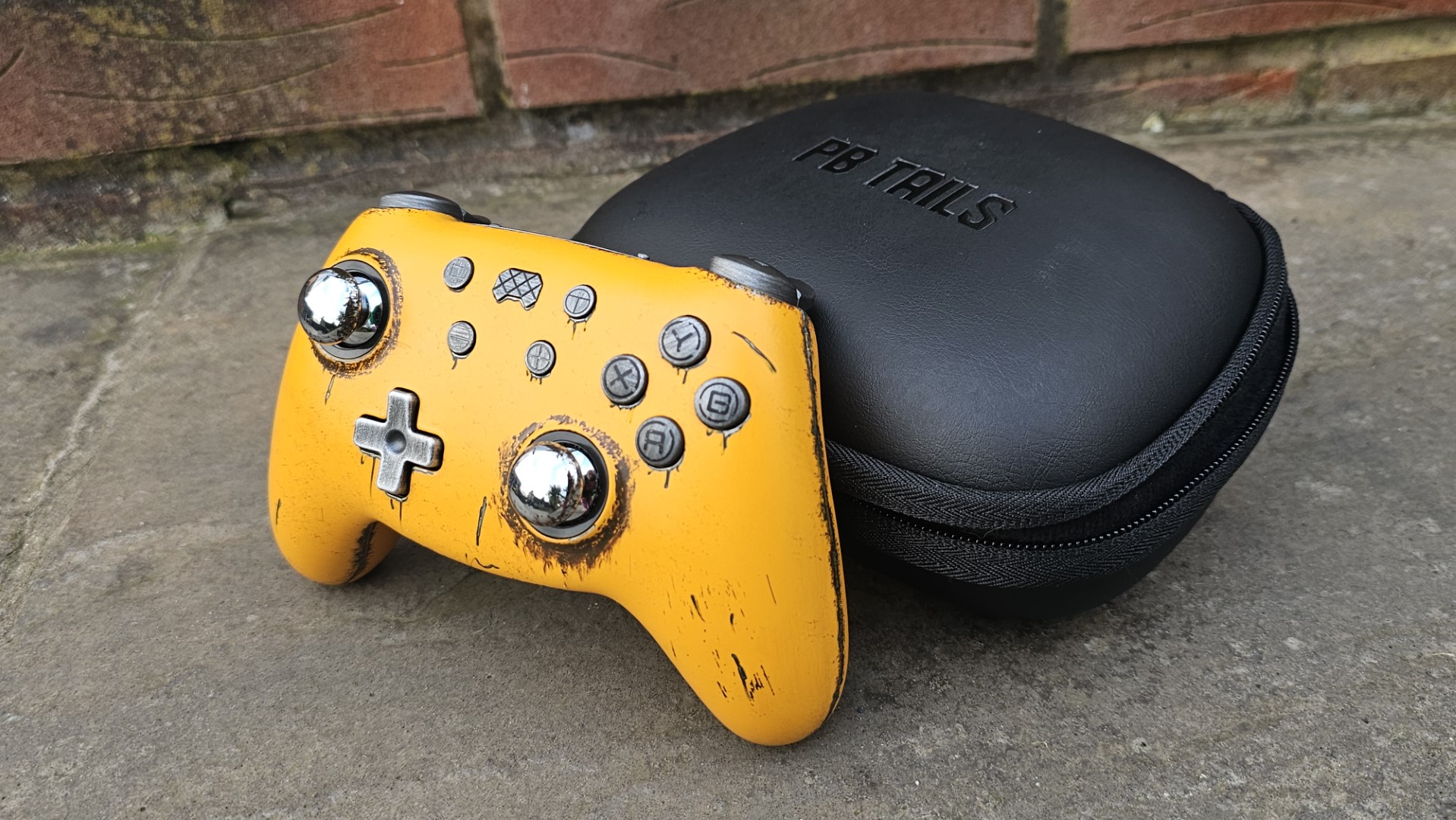
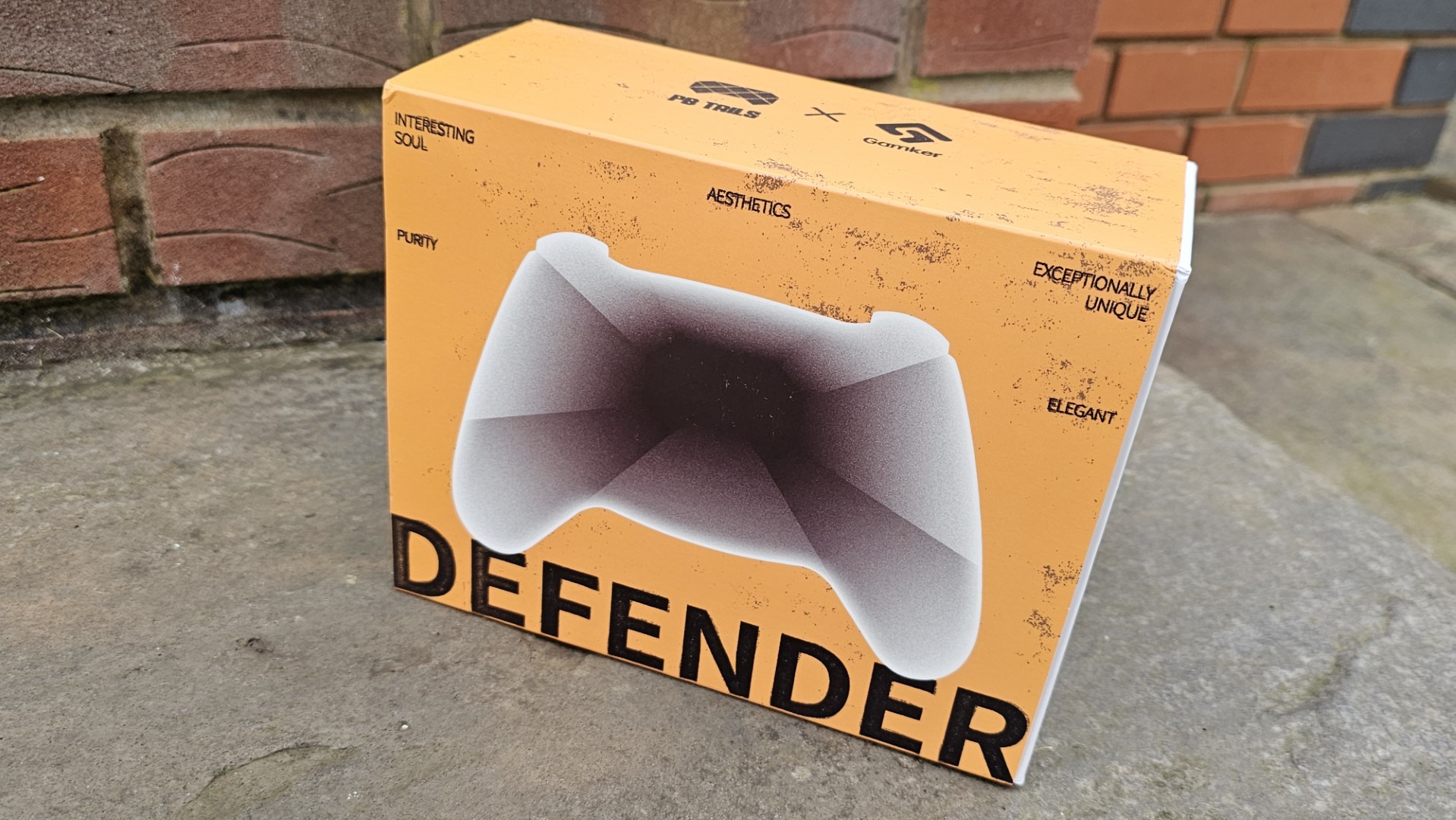
- The PB Tails Metal Crush Defender TMR controller costs $109.99.
- There are some cheaper alternatives in plastic, from $45.99 if you are only interested in the TMR sticks.
• Price: $109.99 at PB Tails
• Connectivity: USB-A to USB-C cable, Bluetooth or 2.4Ghz wireless dongle
• Compatibility: Windows PC, SteamOS, Android, Apple, Nintendo Switch
• Extra controls: 6-axis gyro sensor
• Features: Anti-drift TMR joysticks, Hall Effect triggers, interchangeable joystick caps and mag case, customizable RGB lighting
• Battery life: 10 hours
• Dimensions: 155 mm × 101 mm × 66 mm (6.1 x 4 x 2.6 inches)
• Weight: 346 grams (0.76lbs)
The price of the Crush range varies depending on the controllers shell, so you can grab the plastic 'China White' Crush TMR for $64.99, with some cheaper $45.99 versions for Nintendo Switch layout. The Crush 550 TMR with Porsche inspired details retails for $79.99, while the Metal Crush Ghost Silver is available for $99.99.
I’ve been testing the Metal Crush Defender TMR, priced at $109.99, which features a yellow-worn metallic design reminiscent of Fallout’s post-apocalyptic style. PB Tails controllers are not widely available and are primarily sold through their official website, though some models can be found on Ali Express.
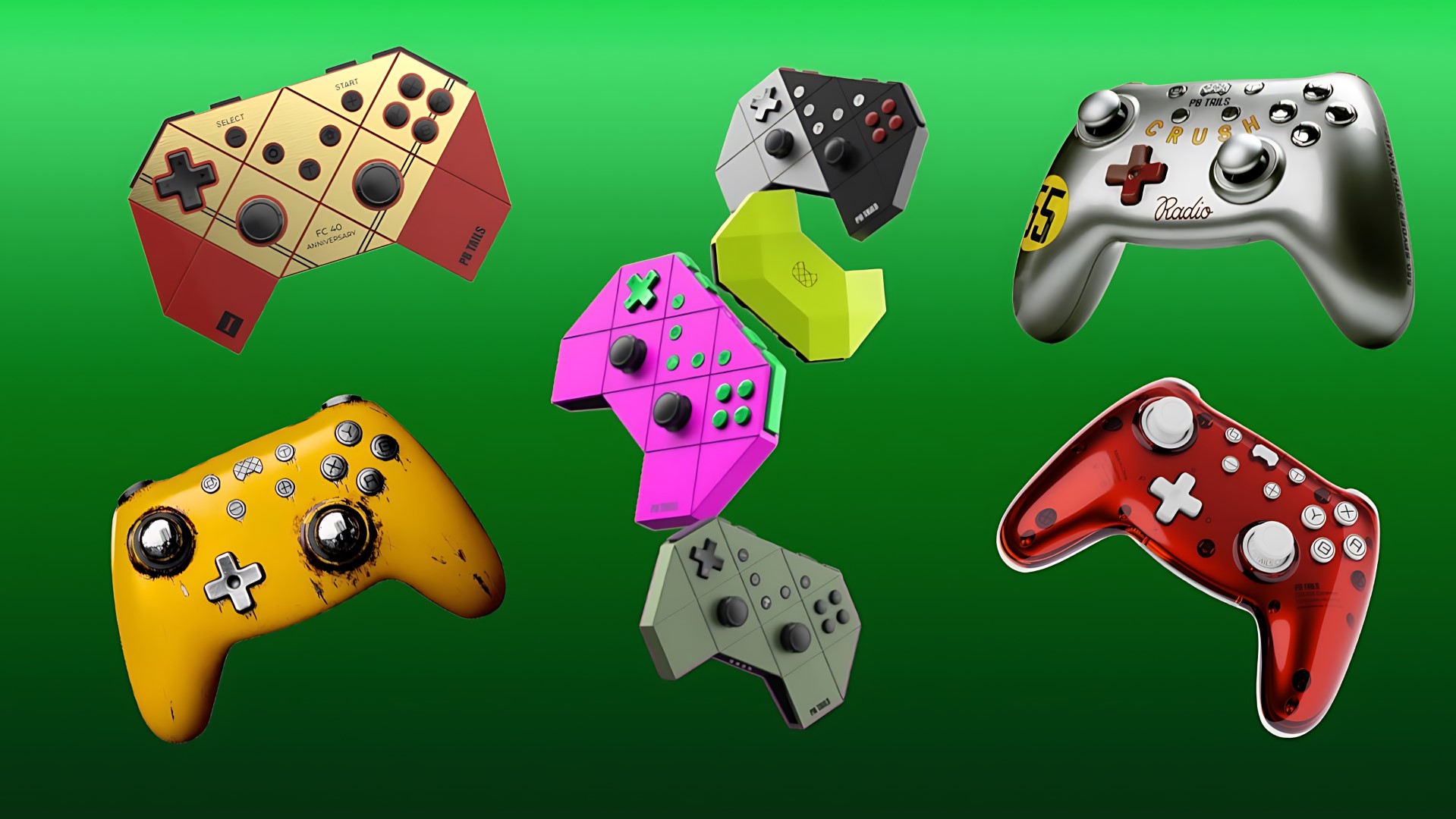
In the box, you get a hard leather effect case with a cushioned innard to keep your controller, a slot for the included 2.4Ghz dongle, and the USB wire for charging and wired use fits into netting within the case.
PB Tails Metal Crush controller review: The good
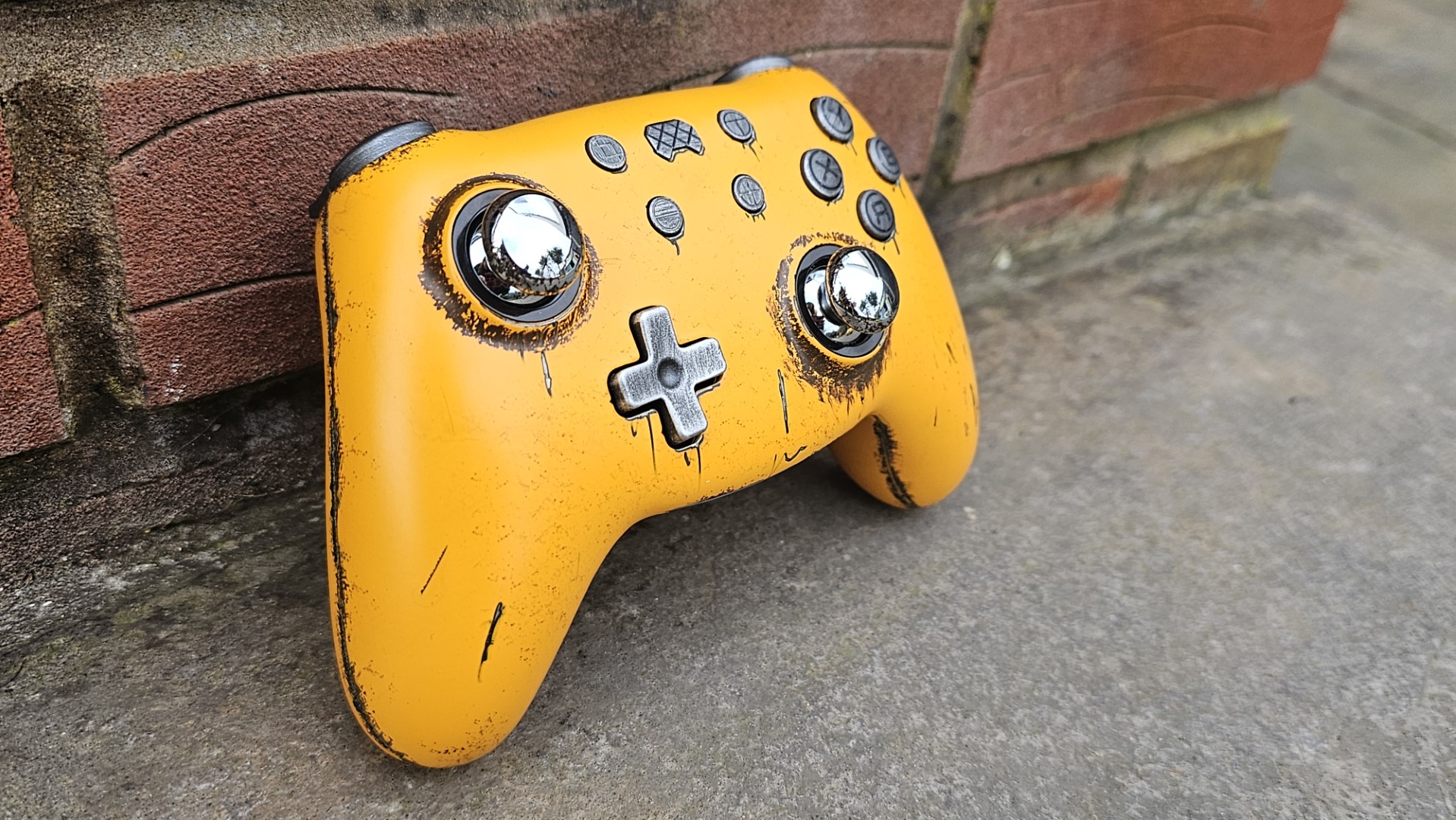
- The TMR sticks feel incredibly smooth and precise, offering a more noticeable improvement over Hall Effect sticks than I expected.
- The controller is incredibly well-built and feels like a luxury product.
- Wireless connectivity with the USB receiver is a doddle, but there's also Bluetooth capability too and it's easy to switch between modes.
Firstly, the aesthetics of this controller are a 10/10. Looking like I picked it up from a scrapyard in Fallout, it's yellow metal casing and mirrored joysticks give it for want of a better phrase, a scrapyard chic vibe. Every inch of the design is packed with intricate details, from the wear and tear etched around the seams to the distressed marks near the joysticks. Despite its rough and ready appearance, it feels remarkably luxurious, thanks in part to its weighty build. Holding it reminded me of my first time with the Xbox Elite Series 2 controller—it exudes quality.
At $109.99, this controller is undoubtedly a premium product, but it truly feels like you're holding something unique. The included leatherette carrying case adds to the luxury experience. However, it wasn’t just the visuals that caught my attention—the Tunneling Magnetoresistance (TMR) technology in the sticks immediately piqued my interest.
What is TMR (Tunneling Magnetoresistance)?
"Wait!" My internal dialogue puzzled, "I’ve just started using Hall Effect. What the heck is TMR?" I had to do my research and now I can clue you in too.
Most controllers on the market use standard analog potentiometer joysticks, which rely on physical contact between components to measure force and distance. Over time, wear and misalignment in these parts lead to the infamous stick drift. Hall Effect sensors bypass this issue by using magnets to measure movements, eliminating physical contact and significantly reducing the chance of stick drift while improving precision. While brands like Xbox haven’t adopted Hall Effect yet, third-party companies have already embraced it with gusto, see the GameSir G7 SE, Turtle Beach Stealth Ultra and Razer Wolverine V3 Pro for just a few examples.
So, where does TMR come in? Like Hall Effect, TMR uses magnetic technology, but it measures resistance changes rather than voltage. TMR is considered more precise, with the ability to detect much smaller movements. It's also less heavy on battery consumption, and is more expensive to implement, which is why it's still relatively rare on the market.
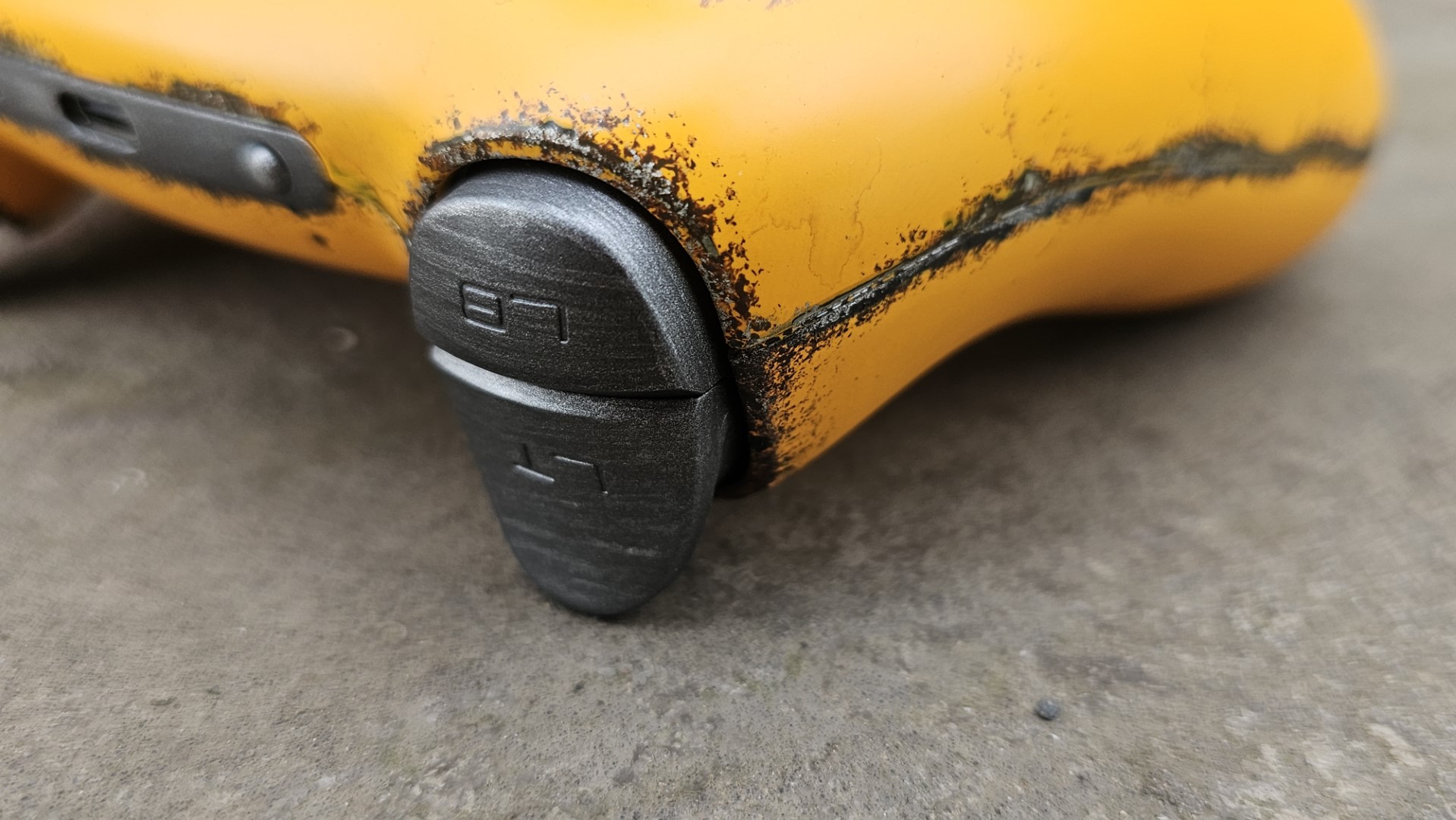

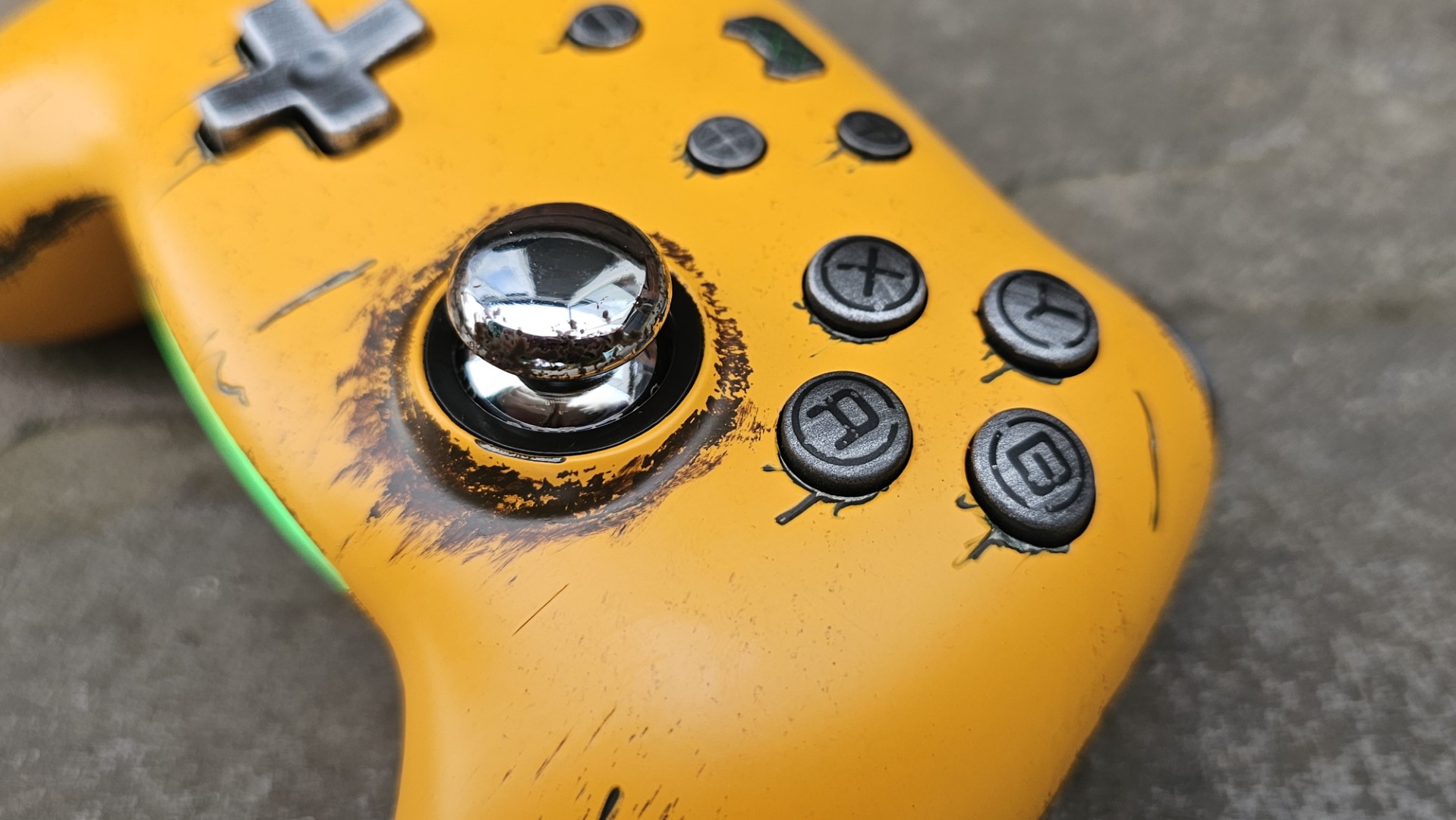
I was skeptical about whether I’d notice much difference between TMR sticks and the Hall Effect sticks on my GameSir G7 SE, but the Metal Crush controller blew me away. The sticks feel incredible, moving as smoothly as a hot knife through butter. While I typically prefer grippy or concave joystick surfaces, the Metal Crush’s smooth, convex sticks didn’t bother me as much as I expected. That said, a textured surface would still have been a welcome addition—it’s a minor gripe in the grand scheme of things.
The triggers and bumpers feel solid and comfortable, adding to the overall impression of durability. The advertised 10-hour battery life held true during my testing. While it doesn’t match the Xbox Elite Series 2’s 40-hour runtime, 10 hours is sufficient if you charge it after every few sessions.

Connecting the controller to different devices was simple, thanks to the included 2.4GHz wireless dongle. I used it mainly with my JSAUX Steam Deck dock for docked gaming and plugged it into my laptop for Xbox cloud gaming. While the controller doesn’t officially support Xbox, this workaround made it compatible. I didn’t test it with the Nintendo Switch, but there’s a dedicated button at the top to switch between Switch and PC modes.
The controller includes a Turbo button, allowing you to assign rapid presses to any face button. This cheat mode makes it easier to spam attacks without wearing out your thumbs. While similar functionality is sometimes available in in-game accessibility settings, having it built into the hardware is a great fallback when the option isn’t there.
PB Tails Metal Crush controller review: The bad
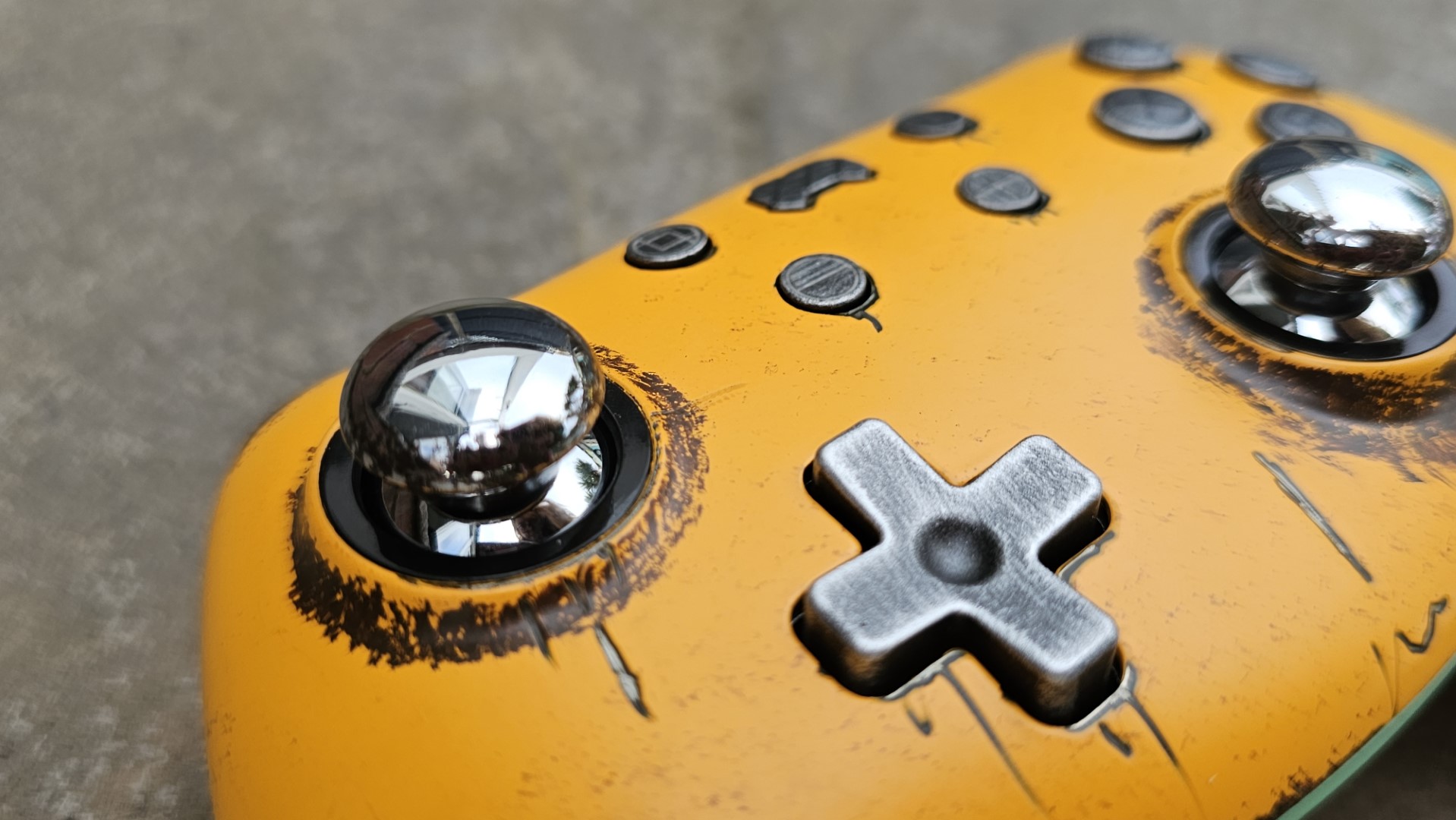
- The smooth, mirrored joysticks are unique but may pose issues for sweaty hands.
- Despite its premium price, the controller lacks trigger stops and remappable rear buttons, which are standard features in many high-end competitors.
I've already kind of touched on what I thought would be an issue with the sticks. The choice of a smooth, mirrored texture is certainly unique, and while it didn’t bother me as much as I thought it would, it could be an issue for gamers prone to sweaty hands. A concave design would have provided better grip without compromising the aesthetics. In fact, given the controller’s car-inspired materials, PB Tails could have implemented engraved or textured metal sticks to get better functionality without compromising on the style points.
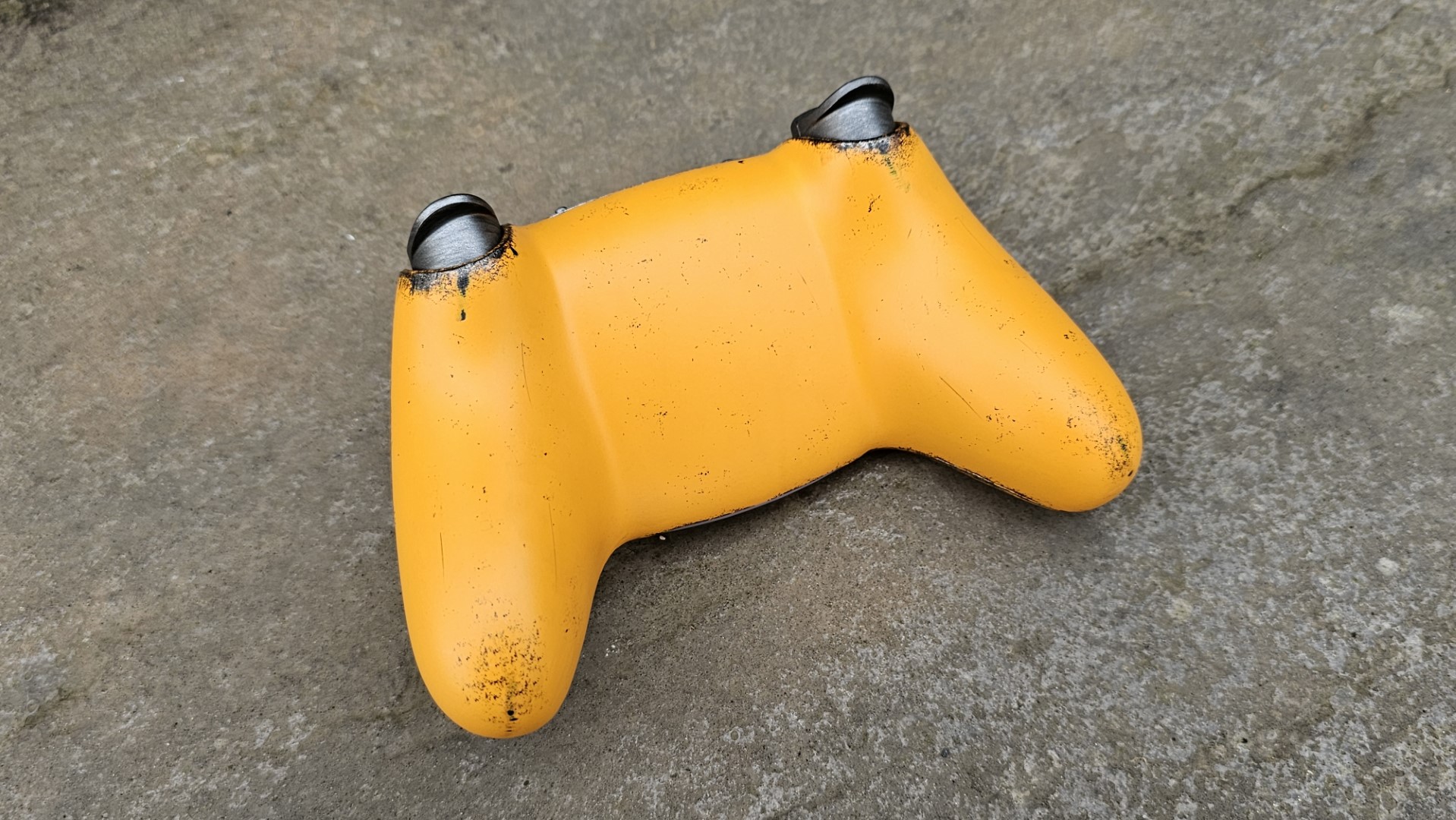
The price of the Metal Crush TMR is another consideration. At this premium tier, I would expect more standard features commonly found in high-end controllers. While the TMR sticks and Hall Effect triggers are excellent, the controller lacks trigger stops for FPS games and remappable rear buttons, which are standard on similarly priced competitors. For a luxury controller, these omissions are disappointing and worth noting.
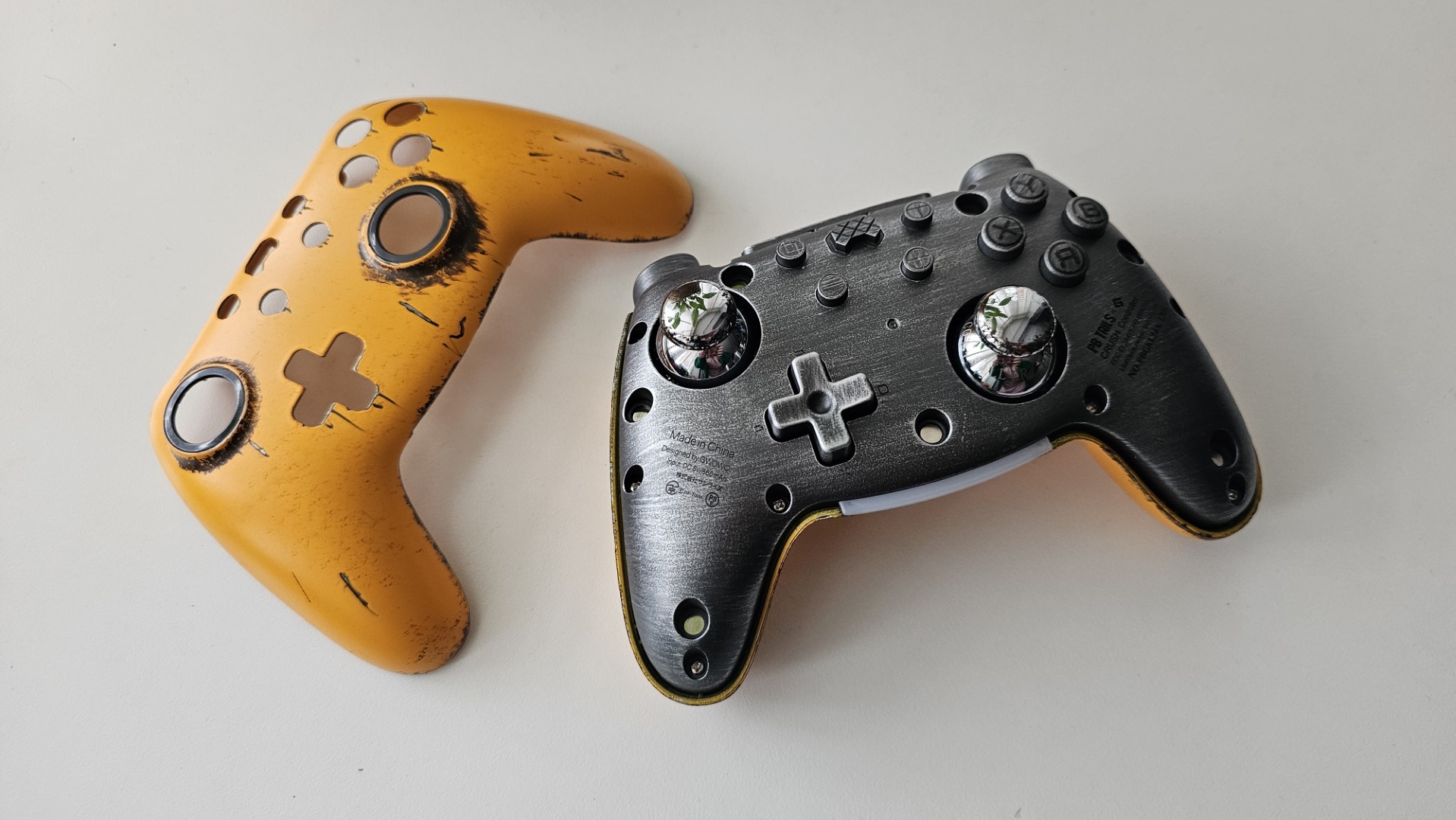
Lastly, the magnetic faceplate system is a fantastic feature—it’s so well-integrated I didn’t even realize it was removable at first. However, the lack of variety in replacement faceplates is a letdown. The available options on the PB Tails website are limited to basic Red, White and Blue designs, despite promotional images showcasing beautiful transparent shells that aren’t currently for sale. It’s a missed opportunity to fully capitalize on this innovative feature and I absolutely would be buying a couple if there were more options.
PB Tails Metal Crush controller review: Also consider
While the PB Tails Metal Crush is truly unique, if you are interested in trying out TMR stick technology specifically there are a couple of options on the market that also use some cheaper build materials that you should consider. First up is the main competitor from GameSir, the GameSir Tarantula Pro which not only has the TMR sticks but has a rotating face button feature so when you switch between PC and Nintendo Switch, the ABXY buttons can move too. Nifty right? It's also cheaper than PB Tails Metal Crush at $69.99, but you are compromising on the premium feel of the PB Tails option.
Secondly, coming in cheaper without the breadth of customization options, there is the GameSir Cyclone 2 Pro wireless.
PB Tails Metal Crush controller review: review: Final thoughts
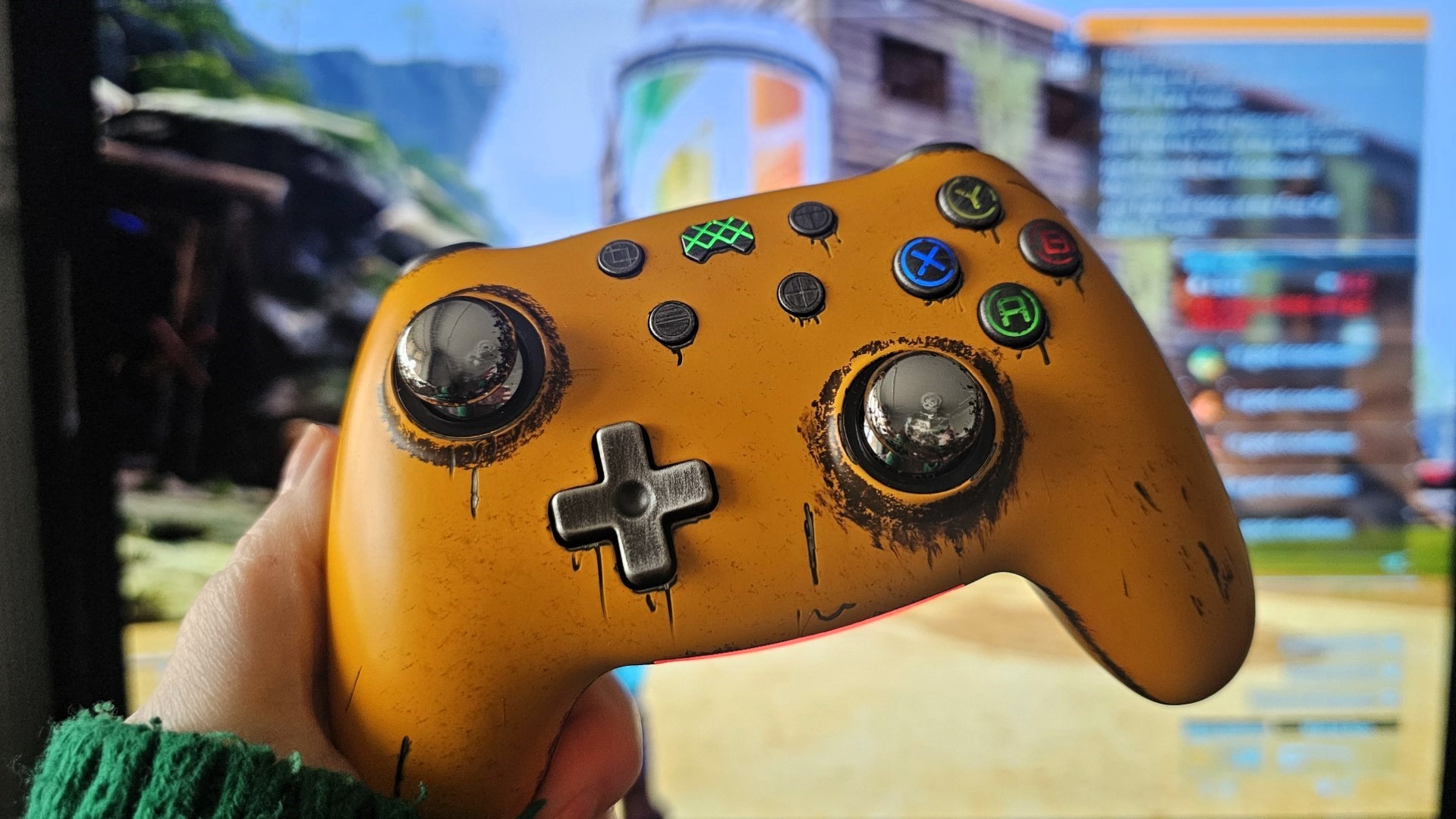
You should buy this if ...
✅You want a unique and premium controller
The PB Tails Metal Crush Defender has standout aesthetics and a rugged metal design
✅You're looking for next-level precision in your joysticks
The TMR technology offers smooth and accurate movement
You should not buy this if ...
❌You need other practical gaming features
There are no trigger stops or remappable buttons, or any customization software.
❌You have excessively sweaty hands
The mirrored and convex joysticks could be an issue for you if this is the case.
Overall, while not perfect, the PB Tails Metal Crush Defender was a joy to test and offered something truly different from what I’m used to. It's been a while since I’ve experienced a luxury controller that holds its own alongside the Xbox Elite Series 2 in the style and craftsmanship stakes, and this one certainly competes in that department. The bold design, precision-focused sticks, and premium materials make it highly desirable for controller collectors looking to step outside the box. However, it's not without its shortcomings. At this price, the addition of rear buttons, trigger stops, and more thoughtful textured details could have made it perfect. That said, I’ll be using this controller for my Steam Deck sessions for quite some time—it’s been a pleasure to use.
The PB Tails Metal Crush TMR is a premium, high-performance controller for PC and Switch gamers who crave a unique, luxury feel. Crafted with a combination of polycarbonate and zinc alloy, it features a removable magnetic faceplate for customization. Supporting Bluetooth 5.0, wireless 2.4GHz, and USB connectivity, it also includes a 6-axis gyro for seamless use with the Nintendo Switch. While it's a bit pricey, you're getting cutting-edge TMR sticks, which offer a noticeable improvement over even Hall Effect technology, alongside truly impressive craftsmanship that makes this controller a standout.







